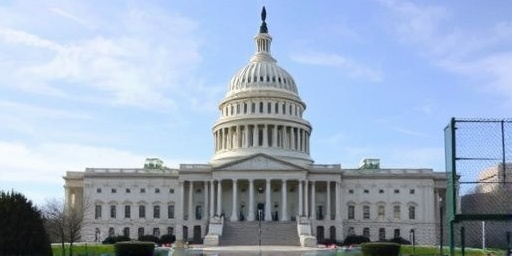The U.S. economy has taken a significant hit from the recent month-long Government shutdown, with the Congressional Budget Office (CBO) projecting losses of up to $14 billion in lost output. This staggering figure underscores the economic impact of political gridlock, as federal operations ground to a halt, affecting everything from national parks to air traffic control. Economists caution that the true cost could climb even higher when accounting for indirect effects like delayed investments and consumer confidence dips.
CBO’s In-Depth Analysis Reveals Shutdown’s Direct Financial Drain
The CBO’s report, released this week, provides a meticulous breakdown of how the Government shutdown disrupted federal activities and rippled through the broader U.S. economy. During the 35-day impasse, non-essential government services were suspended, leading to furloughs for over 800,000 federal employees and unpaid work for another 1.3 million. The agency calculated that this paralysis shaved off approximately 0.4% of the fourth-quarter GDP growth, translating to $11 billion in immediate lost output from reduced federal spending and productivity.
But the numbers don’t stop there. The CBO factored in the temporary boost from back pay once the shutdown ended, which mitigated some losses but didn’t erase them entirely. “The shutdown’s economic impact extends beyond the federal payroll,” said CBO Director Phillip Swagel in a statement. “Private sector contractors and suppliers faced cash flow interruptions, amplifying the total cost to $14 billion when including these secondary effects.” This estimate aligns with preliminary data from the Bureau of Economic Analysis, which reported a slowdown in government-related expenditures.
To illustrate the scale, consider the daily cost: the shutdown averaged about $400 million in daily lost output, comparable to the economic value of a major city’s annual budget. Federal agencies like the Department of Defense operated under contingency plans, but inefficiencies mounted, with training exercises postponed and maintenance delayed. The report highlights that such disruptions aren’t just fiscal—they erode operational readiness and long-term efficiency in the U.S. economy.
Federal Workers and Families Bear the Brunt of Uncertainty
At the heart of the Government shutdown‘s toll are the hundreds of thousands of federal workers thrust into financial limbo. Stories of families skipping meals, delaying medical care, and dipping into savings flooded social media and news outlets during the standoff. The CBO notes that while most furloughed employees received retroactive pay after Congress passed a funding bill, the psychological and short-term economic strain was immense.
Take, for instance, the case of Smithsonian Institution staff, who closed museums and research facilities, resulting in millions in forgone ticket sales and educational programs. “We lost not just revenue, but irreplaceable opportunities for public engagement,” remarked a union representative from the American Federation of Government Employees. Across agencies, the shutdown idled critical services: the IRS delayed tax processing, affecting refunds for millions, while the National Park Service racked up $250 million in lost visitor spending alone.
Economists from the Brookings Institution estimate that low-income federal workers, many living paycheck to paycheck, saw their household spending drop by 20-30% during the closure. This consumer pullback cascaded into local economies, particularly in Washington, D.C., where shutdown-related losses topped $1 billion. Food banks reported a 40% surge in demand, highlighting the human cost behind the CBO’s figures. As one affected employee shared in a congressional hearing, “The economic impact isn’t abstract—it’s our rent, our groceries, our kids’ futures.”
Ripples Extend to Private Sector and Global Markets
The government shutdown‘s economic impact didn’t confine itself to public coffers; it reverberated through private industries and international trade. Small businesses reliant on federal contracts, such as those providing IT services or construction, faced payment delays totaling billions. The U.S. Chamber of Commerce reported that over 10,000 companies experienced cash flow issues, with some teetering on bankruptcy.
In the aviation sector, the Federal Aviation Administration’s reduced staffing led to flight delays and cancellations, costing airlines an estimated $500 million in operational losses. Export-Import Bank activities halted, stalling $40 billion in potential exports and frustrating trading partners in Europe and Asia. “The shutdown sent a signal of instability to global investors,” noted Mark Zandi, chief economist at Moody’s Analytics. “Foreign direct investment dipped, and the dollar weakened slightly against major currencies, adding another layer to the lost output.”
Moreover, the CBO’s analysis points to intangible costs, like diminished U.S. credibility in international forums. During the shutdown, diplomatic missions operated skeleton crews, delaying trade negotiations and aid programs. Wall Street reacted with volatility; the Dow Jones Industrial Average saw intra-day swings tied to shutdown news, erasing $300 billion in market value at one point. These private sector hits, combined with federal losses, paint a picture of a U.S. economy more vulnerable to political dysfunction than previously thought.
Economists Warn of Underestimated Long-Term Consequences
While the CBO’s $14 billion estimate captures the immediate lost output, experts argue the full economic impact of the government shutdown could exceed $20 billion when factoring in deferred projects and eroded productivity. A study by the Partnership for Public Service suggests that the shutdown’s disruption to research and development—particularly at agencies like NASA and the NIH—could delay innovations worth tens of billions over the next decade.
“History shows shutdowns have lingering effects,” said Austan Goolsbee, former chair of the Council of Economic Advisers. “The 2013 shutdown, for comparison, cost $24 billion and contributed to a measurable slowdown in hiring.” This time around, the prolonged duration amplified those risks, with unemployment claims spiking 15% in shutdown-affected regions. Consumer confidence indices, tracked by the Conference Board, plummeted to a two-year low, potentially curbing holiday spending and fourth-quarter growth.
Environmental monitoring suffered too; EPA data collection paused, leading to gaps in climate reporting that could influence policy and insurance rates. Economists at the Federal Reserve warn that repeated shutdown threats could raise the perceived risk premium on U.S. debt, increasing borrowing costs for everyone from homeowners to corporations. The CBO itself acknowledges uncertainties, noting that if the shutdown had extended another week, losses could have ballooned by an additional $2 billion.
In a broader context, this event highlights systemic fragilities in the U.S. economy. With national debt surpassing $34 trillion, fiscal cliffs like this shutdown exacerbate deficit concerns. International bodies, including the IMF, have urged Congress to adopt automatic continuing resolutions to prevent future disruptions, emphasizing that such instability hampers global growth projections for the U.S.
Path to Recovery: Bipartisan Efforts and Preventive Measures Ahead
As the U.S. economy begins to rebound from the government shutdown‘s economic impact, focus shifts to mitigation and prevention. The recent funding bill not only reopened agencies but allocated $3 billion for recovery efforts, including expedited payments to contractors and support for affected communities. Treasury Secretary Janet Yellen emphasized in a press briefing, “We’re working around the clock to restore full operations and minimize long-term lost output.”
Looking forward, lawmakers from both parties are floating reforms, such as a 2019-style automatic pay for essential workers during future shutdowns. Bipartisan talks in the House aim to raise the debt ceiling ahead of schedule, averting another crisis by mid-2024. Economists predict a quick snapback in GDP growth, potentially adding 0.2% in the first quarter of next year as pent-up spending unleashes.
Yet, the road to full recovery involves addressing underlying budget divides. With upcoming debates on immigration, infrastructure, and defense spending, the risk of mini-shutdowns looms. Advocacy groups like the National Association of Manufacturers are pushing for a “shutdown insurance” fund to buffer private sector losses. As one Capitol Hill staffer put it, “This $14 billion lesson from the CBO should be the catalyst for lasting fiscal discipline.”
Ultimately, the shutdown serves as a stark reminder of governance’s economic stakes. By streamlining appropriations and fostering compromise, policymakers can safeguard the U.S. economy from future shocks, ensuring that political disagreements don’t derail national prosperity.









